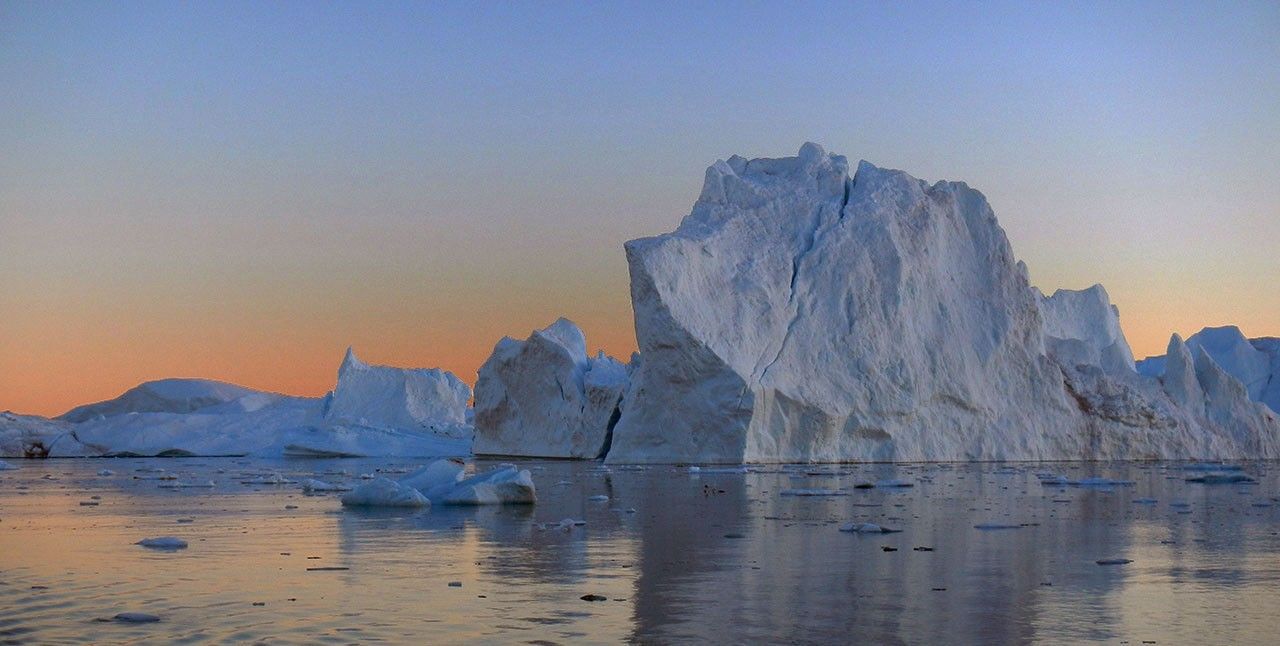How big is just one gigatonne?
Satellite data show that Greenland and Antarctica are losing mass at a rate of 283 gigatonnes per year and 145 gigatonnes per year, respectively. So how big is just one gigatonne?
Central Park
This unit of mass is equivalent to one billion metric tons, 2.2 trillion pounds, or 10,000 fully-loaded U.S. aircraft carriers.
Central Park is 4 kilometers long and 0.8 kilometers wide. A gigatonne of ice placed here would extend 341 meters (1,119 feet) high.
Central Park dimensions (from OpenStreetMap):
- 4 km meters long, 0.8km wide
- 1 gigatonne of ice = 1.091 km³
- 4 km * 0.8 km * ice height km = 1.091 km³
- ice height = 1.091 km³ / (4 km * 0.8 km)
- ice height = 0.3409 km = 340.9 meters
- A fully loaded Nimitz-class aircraft carrier weights 100,000 tonnes, according to the Naval Institute Guide to the Ships and Aircraft of the U.S. Fleet.
National Mall
This unit of mass is equivalent to one billion metric tons, 2.2 trillion pounds, or 10,000 fully-loaded U.S. aircraft carriers.
The National Mall extends 2 kilometers between the Washington Monument and the U.S. Capitol, and is 200 meters wide. A gigatonne of ice placed here would extend 2728 meters (8,948 feet) high.
National Mall dimensions (from OpenStreetMap):
- 2 km long, 0.2 km wide
- ice height = 1.091 km³ / (2 * 0.2) = 2.7275 km = 2,727.5 meters
- A fully loaded Nimitz-class aircraft carrier weights 100,000 tonnes, according to the Naval Institute Guide to the Ships and Aircraft of the U.S. Fleet.
How much is 5,000 gigatonnes of ice?
This is the amount of ice lost from the polar ice caps that NASA’s original GRACE mission observed from 2002 to 2017.
During the 15-year lifetime of the original GRACE mission (2002-2017), 5,641 gigatonnes of ice of were lost in Greenland and Antarctica. Ninety-nine percent of the world’s freshwater ice is located in these ice sheets.
This is enough to cover Texas in a sheet of ice 26 feet high.
- Antarctica lost 1,870 gigatonnes since 2002
- Greenland lost 3,771 gigatonnes since 2002
- 5,641 gigatonnes total combined
- Area of Texas: 696,241 km² (Texas Almanac)
- Ice density = 1.091 km³ / gigatonne
- 5,000 gigatonnes * 1.091 km³ / gigatonne = ice height * 696,241
- ice height = (5,000 gigatonnes * 1.091 km³ / gigatonne) / 696,241 km² = 0.00783493072 km = 7.83493072 m = 25.70515328084 feet
How much is 49,000 gigatonnes of ice?
This is our best estimate of how much Greenland and Antarctic ice has melted into the ocean since the start of the 20th century.
Earth
Global sea level has risen by about 8 inches since 1901. This rise is due to a combination of melting ice and water expanding due to increased temperatures. While we don’t have precise measurements, scientific models indicate that melting ice has caused about two-thirds of sea level rise to date.
We estimate that 49,000 gigatonnes of ice have melted over that time frame—enough ice to cover the entire contiguous U.S. in an ice sheet 22 feet high (about 7 meters), or coat the entire Moon's surface in a 5-foot-high ice sheet.
- Estimated total sea level rise from 1901 to 2015 = 20.3 centimeters
- Estimated sea level rise due to thermal expansion = 6.6 cm
- Estimated rise due to ice melt = 20.3cm - 6.6 cm = 13.7 cm = 137 mm (from IPCC report, chapter 4)
- 137 mm * 360 Gt/mm = 49320.0 gigatonnes
- Area of continental U.S.: 8,081,867 km² (U.S. Census)
- Ice density = 1.091 km³ / gigatonne
- 49,000 gigatonnes * (1.091 km³ / gigatonne) = ice height * 8,081,867 km² x = (49,000 gigatonnes * 1.091 km³ / gigatonne) / 8,081,867 km² = 0.006657882392768898 km = 6.66 m = 21.84 feet
Moon
- Moon surface area 37,936,694.79 km² (NASA)
- 49,000 gigatonnes * 1.091 km² = ice_height * 37,936,694.79 km²
- ice_height = (49,000 gigatonnes * 1.091 km³ / gigatonne) / 37,936,694 km² = 0.001409 km = 1.409 m = 4.6 feet

































